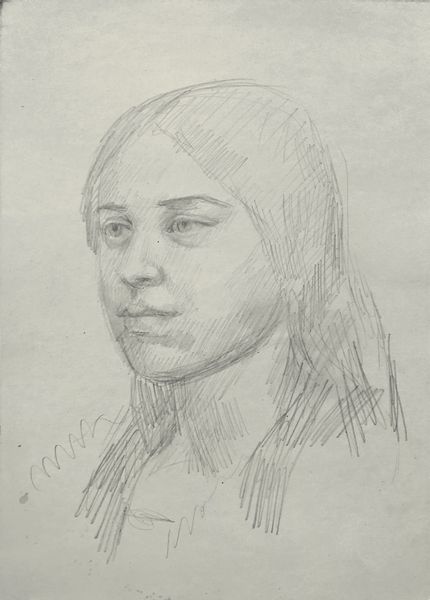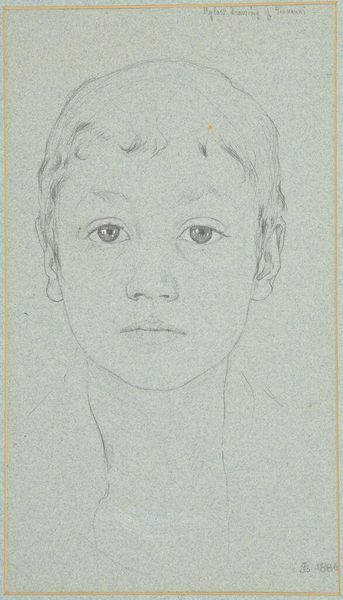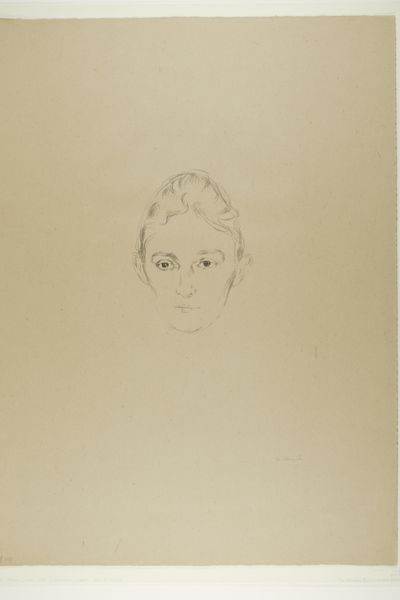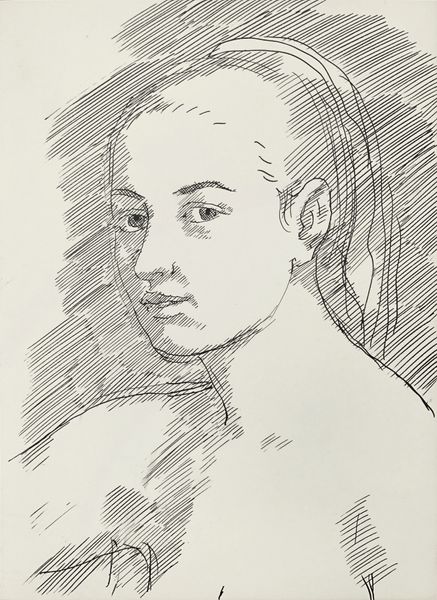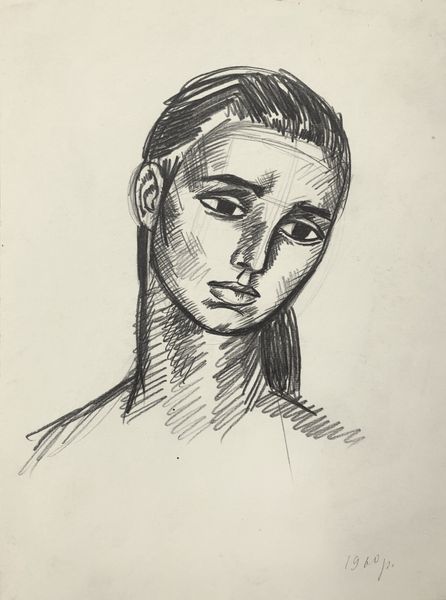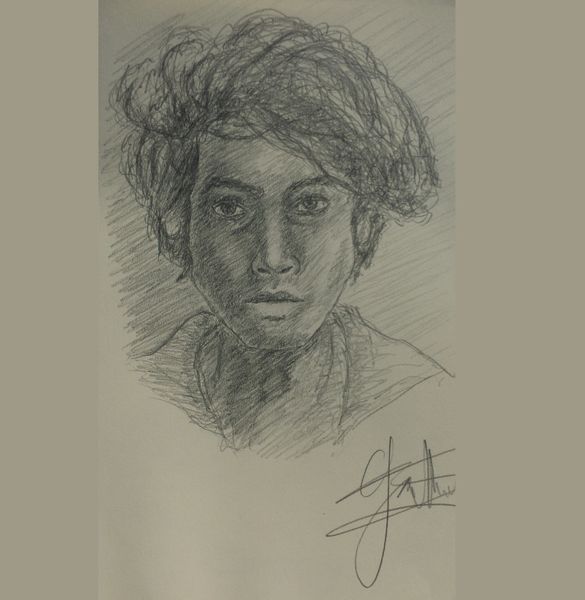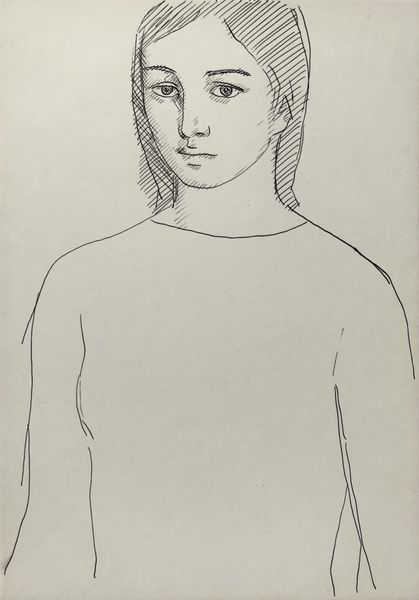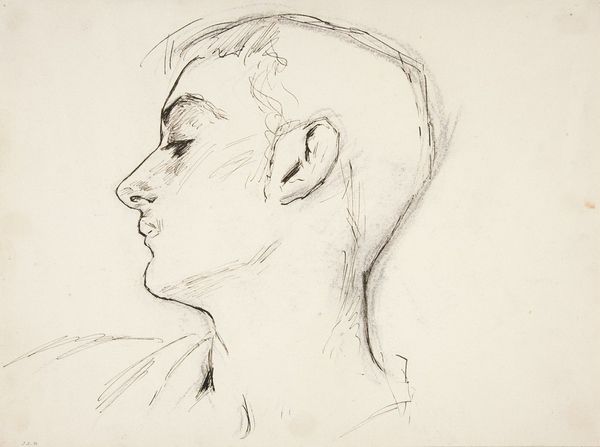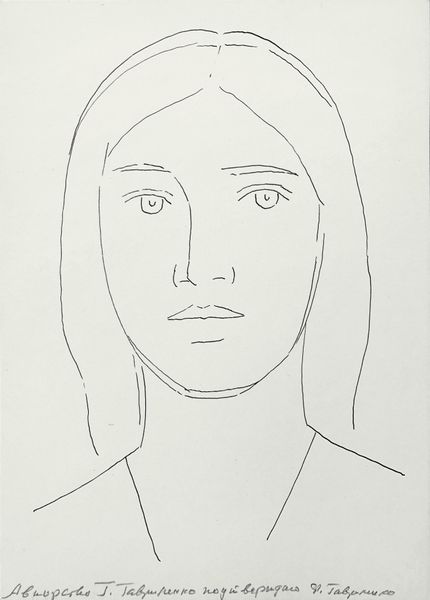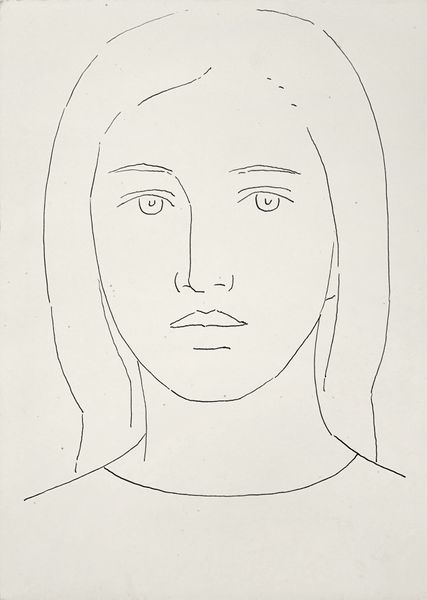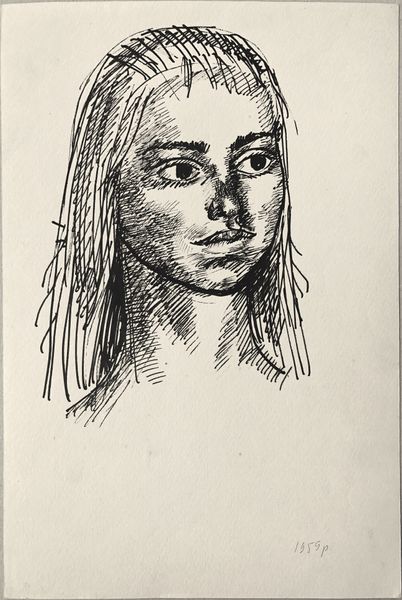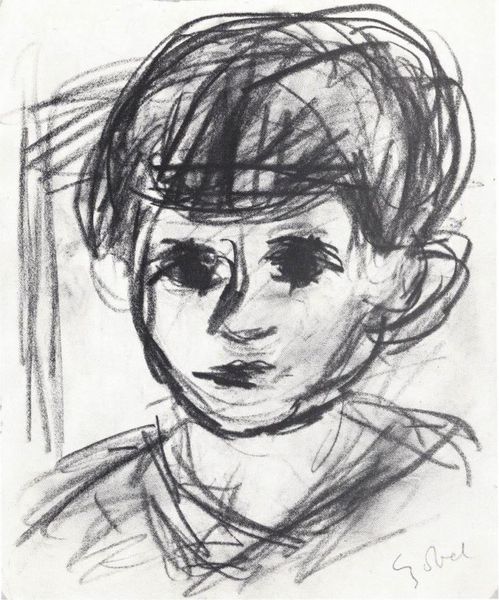
Copyright: Modern Artists: Artvee
Editor: We're looking at "Gérard, masque," a pencil drawing by Henri Matisse, created around 1945 or 46. There's a quietness to it, a sort of gentle melancholy. What do you make of the face, and the ways it resonates beyond just being a portrait? Curator: It’s compelling how Matisse evokes a mask-like quality, even though this is clearly a human face. Think about what a mask traditionally represents. It conceals, but it also reveals something – perhaps a role, a hidden emotion, or even a spirit. What is being brought forth, or held back, do you think? Editor: Hmm, held back. The eyes seem averted, guarded. Maybe it’s the historical context too. It was drawn right after World War II, maybe reflecting a certain… weariness? Curator: Precisely! Post-war Europe was grappling with profound questions of identity and the human condition. Notice how Matisse uses shading, almost like shadows playing on the face. It’s not just about surface likeness. The mask isn't a physical object, but an emotional one. In some cultures, masks help navigate between the physical and spiritual worlds. Could Matisse be exploring a similar boundary? Editor: That's a powerful idea. So the apparent simplicity, the pared-down style, is almost deceptive? Curator: Absolutely. Simplicity in art can be profoundly evocative. It strips away the superficial, allowing deeper symbolic resonances to emerge. By minimizing detail, Matisse encourages us to project our own experiences and interpretations onto Gérard’s face. It asks us what “face” are we, each of us, wearing to greet the world. Editor: I see it differently now. It's less about sadness and more about quiet strength and reflection. Thanks for showing me how to look deeper. Curator: My pleasure. Discovering those hidden layers is the great joy of exploring art.
Comments
No comments
Be the first to comment and join the conversation on the ultimate creative platform.
